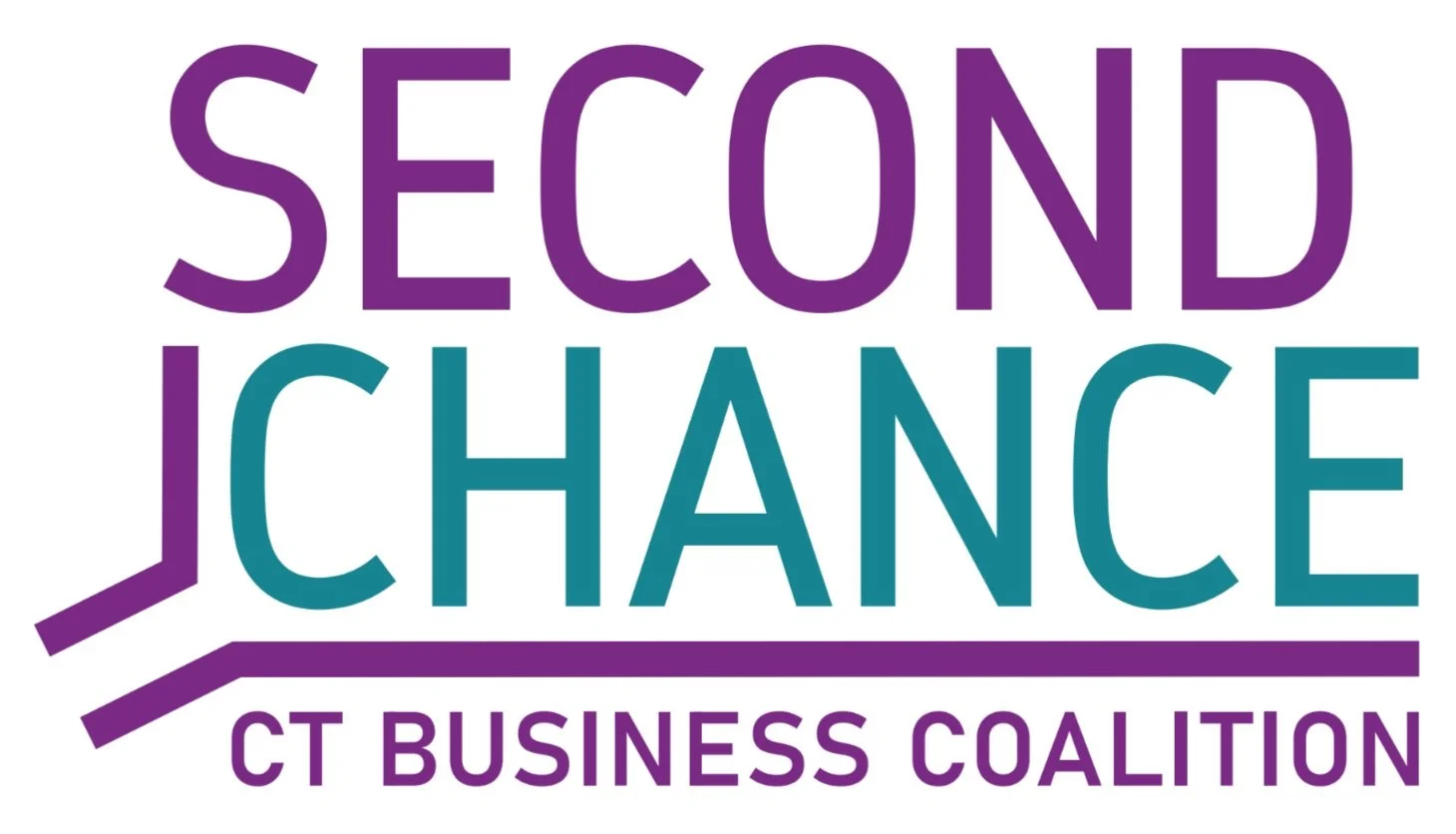Experiential Learning in Design
Logo designed by Delia Schleker, Central Graphic/Information Design student
CREDITS
CONCEPT AND PROJECT MANAGEMENT
Stephen M. Cox, Ph.D., Professor Department of Criminology and Criminal Justice, Institute for the Study of Crime and Justice, CCSU
Heidi Hughes, Ph.D., Associate Professor & HR Faculty Advisor, Mgt & Organizations, School of Business, CCSU
Tayler Rainville, Student, Department of Criminology and Criminal Justice, Institute for the Study of Crime and Justice, CCSU
DESIGN AND PRODUCTION
Jeanne Criscola, MFA, Associate Professor Graphic/Information Design Program, CCSU
Peggy Bloomer, Ph.D., Assistant Professor Graphic/Information Design Program, CCSU
Kamiya Dingle, Student, Graphic/Information Design Program, CCSU (Photographic Illustrations)
Delia Schleker, Student, Graphic/Information Design Program, CCSU (Second Chance logo)
Over summer break, Delia Schleker, a senior Graphic Design student was approached by her Central Graphic/Information Design professors with an opportunity. Professor Jeanne Criscola and Dr. Peggy Bloomer were working with Dr. Stephen Cox, Criminology & Criminal Justice, and Dr. Heidi Hughes, Business Management, on a commission for the Department of Corrections, David McCluskey. The project for Central Design was to contribute to the success of the Second Chance CT Business Coalition program. Those in charge of the program were interested in additionally hiring graphic design students from Central Connecticut State University to create a logo for their new brand identity. Delia, who was recommended by the professors, excitedly accepted this opportunity, and began to work diligently on it.
The Second Chance program’s mission is to “promote the benefits of second chance employment and provide employers with resources to hire and provide career advancement to people with criminal records.” This statement was kept in Delia’s mind and often referenced when brainstorming the layout, typefaces, and use of the teal and purple colors within the logo. Early in the design process, it was decided that a sans serif font should be used that conveys an industrial yet modern feeling. It took Delia quite a long time to settle on a font face she felt fit just right, but in the meantime, she was able to decide on a few different draft ideas to present to the head managers of the Second Chance program. They were shown five versions of the wordmark and the pick was unanimous; they LOVED the idea incorporating the state of Connecticut motif.
With a direction established, the student designer refined the idea, fixed the alignment of the elements, and decided on the fonts for the logo. It was noted in the presentation that the managers of the project appreciated how the logo ‘Second’ wasn’t the same length as ‘Chance’ due to it being very legible from a distance and easy to read quickly. The use of color also helped push this as ‘Chance’ was the only element in teal, while the remaining elements were the royal purple color. The two lines that represent the shape of Connecticut were made thinner, helping empathize the impact of the program name through the thickness contrast. A free-to-use sans serif font called Gidole was used along with Din Condensed for the logo’s creation. After contemplating, working hard, and finalizing all of these elements with her professors, Delia’s work was reviewed and approved by the Second Chance managers and is now being used as their current brand identity.
The Toolkit and Brochures were printed by the CT Department of Correction’s Correctional Enterprises of CT Workers under the direction of Matthew Keen and Ray Monroe.

